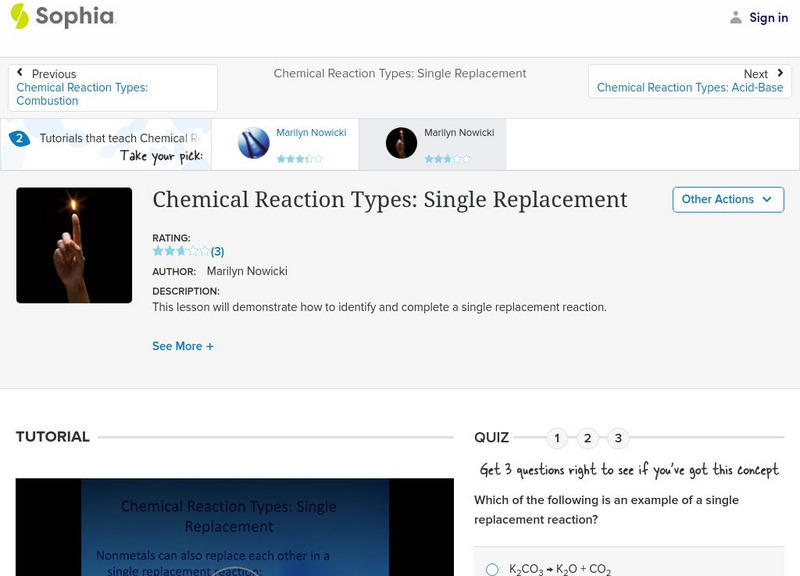Bozeman Science
Covalent Network Solids
In this video Paul Andersen explains how covalent network solids form elementally (like graphite) or by combining multiple nonmetals (like quartz). Covalent network solids contain elements from the carbon group because they have four...
Curated Video
The EASY way to name Ionic Compounds!
In this video we are going to look how to name binary ionic compounds. These compounds deal with the ionic bonding of 2 different elements. Remember that an ionic compound is formed between a metal and a nonmetal or a cation and an...
Curated Video
Chemical Equations and Reactions: The Chemical Reactions
By the end of this learning object, the student will be able to: Summarize the important points of chemical equations and reactions.28728
Curated Video
Is The Fulminated Mercury Scene From Breaking Bad Scientifically Accurate?
While it is true that a crystal of mercury fulminate would explode when slammed to the floor, the crystal depicted in the show Breaking Bad did not accurately represent the appearance of mercury fulminate. Commercial-grade mercury...
Curated Video
Introduction to Bonding and Ions
In this video, the speaker explains the concept of electronic structures and bonding in chemistry. They start by discussing noble gases and their highly stable electronic structures with full outer shells. They then explain how metals...
Professor Dave Explains
Metallic Bonds
We've learned about ionic and covalent bonds, so we understand the interactions that will occur between a metal and a nonmetal, or between two nonmetals. But what about two metals? Metallic bonding! This ends up being sort of like ionic...
ProTeachersVideo
The Halogens - Colour Properties
Chemistry teacher Subathra Subramaniam explores the halogens, the collection of non-metals found in group seven of the periodic table that display their own qualities and trends. KS3 and KS4 Chemistry.
Curated Video
Identifying Metals and Non-Metals: Characteristics, Reactions, and Differences
This is a video lesson on metals and nonmetals. The speaker explains the differences between metals and nonmetals, their characteristics, how to identify them on the periodic table, and how to identify them through their reactions with...
Sophia Learning
Sophia: Chemical Reaction Types: Single Replacement: Lesson 1
This lesson will demonstrate how to identify and complete a single replacement reaction. It is 1 of 2 in the series titled "Chemical Reaction Types: Single Replacement."
Sophia Learning
Sophia: Chemical Reactions: Activity Series: Lesson 2
This lesson will explain that a single replacement reaction needs a driving force in order to go forward to completion. It is 2 of 2 in the series titled "Chemical Reactions: Activity Series."
Sophia Learning
Sophia: Chemical Reactions: Activity Series: Lesson 1
This lesson will explain that a single replacement reaction needs a driving force in order to go forward to completion. It is 1 of 2 in the series titled "Chemical Reactions: Activity Series."
Sophia Learning
Sophia: Chemical Reaction Types: Single Replacement: Lesson 2
This lesson will demonstrate how to identify and complete a single replacement reaction. It is 2 of 2 in the series titled "Chemical Reaction Types: Single Replacement."




